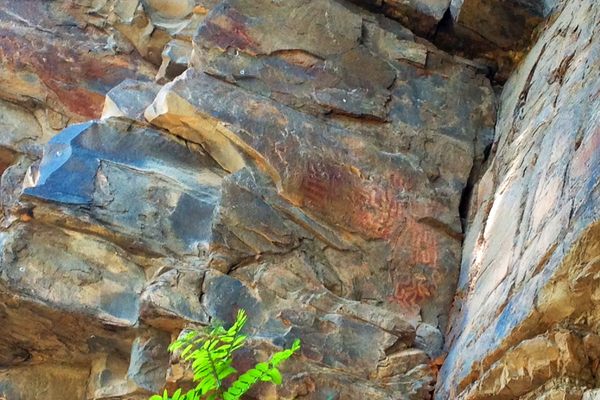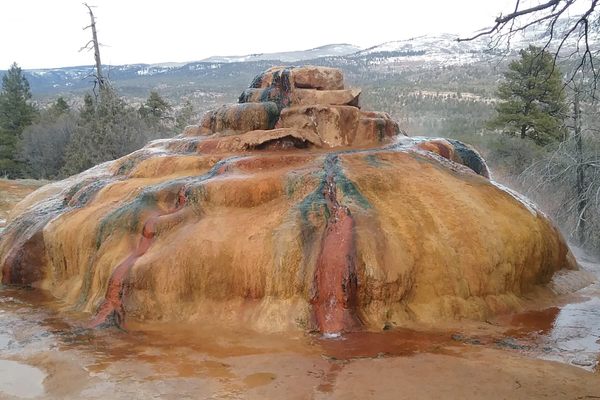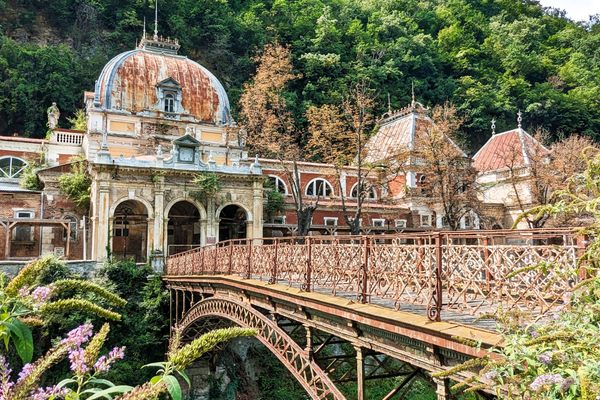AO Edited
Hot Springs
An idyllic mineral hot springs facility with a more-than checkered past.
The only natural mineral hot springs in the state of North Carolina sits in a picturesque mountain town aptly named Hot Springs, at the juncture of the French Broad River and the Appalachian Trail, encircled by the Pisgah National Forest. Heated, carbonated waters are jetted from the ancient river (one of the oldest on earth, by some measures) into a series of neat, private mineral baths lining the river, offering unobstructed views of the waterways and the Blue Ridge Mountains beyond. Save for a handful of curious remains, one would never guess the properties motley past.
While its specific role is inconclusive, pictographic evidence suggests the springs were at least known to the Cherokee tribes who were the original inhabitants of this land. With the encroachment of European settlements in the late 1700s, the springs grew into the resort at the heart of a burgeoning tourist town then named “Warm Springs,” whose popularity soared further with the advent of the nearby Buncombe Turnpike in 1828.
In 1837, the opulent, 350-room Warm Springs Hotel was erected to accommodate the influx of the sick and the infirm seeking the rejuvenative properties of the resort’s mineral-rich waters. Unfortunately, this hotel burned down in 1884. Fortunately, an even warmer spring was discovered the very same year, leading the town to change its name to “Hot Springs,” anyway.
Under a new town name, the even-more regal Mountain Park Hotel—boasting 1,000 feet of piazza and a bathhouse with 16 marble-lined pools—opened in 1886 with, as promised, even hotter tubs. Unfortunately, business shuttered so dramatically at the onset of World War I that the resort was leased in its entirety to the federal government, who used the land as an internment camp for German merchant sailors captured in U.S. waters.
Over several years, the interned but spirited sailors built themselves a veritable village, complete with a cathedral, businesses, and even a working carousel, with many sailors’ families voluntarily relocating to Hot Springs to accompany their captive husbands and fathers. In 1918, however, the robust town was dissolved and its interns relocated out of state. Their village was burned on Armistice Day with only a handful of pictures remaining in the way of proof.
A third iteration of a resort, the Hot Springs Inn, was built in 1924 before—you guessed it—burning down in 1977. The property fell into abandon for a decade, until a Madison County local bought the land, rediscovered the site of the springs, and rebuilt the thrice-destroyed resort from the ground up.
With the notable exception of the still-standing building that once housed 16 marble-lined tubs, little remains of Hot Springs’ turbulent past. Visitors can select from a range of packages varying in bathing time and accommodation, which runs from primitive to luxury—fitting, perhaps, for a resort that’s truly seen it all.


















Follow us on Twitter to get the latest on the world's hidden wonders.
Like us on Facebook to get the latest on the world's hidden wonders.
Follow us on Twitter Like us on Facebook